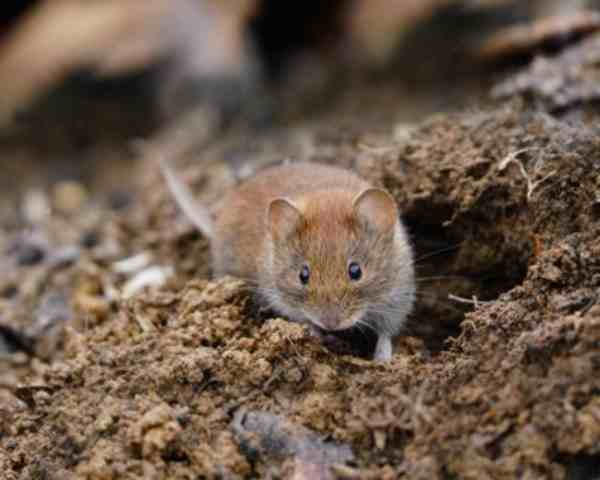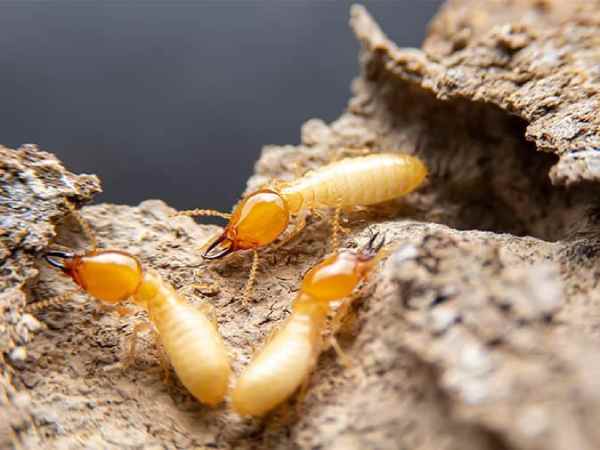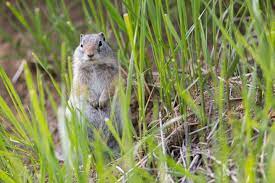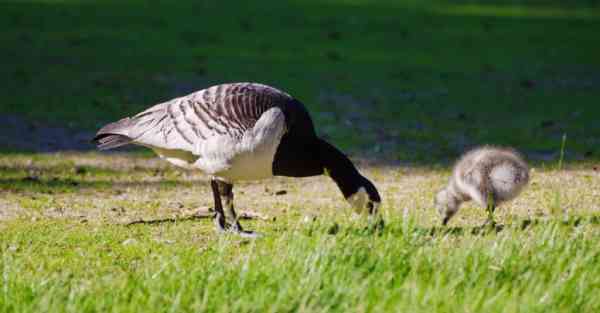In the serene world of gardening, hostas have long been celebrated for their lush foliage and elegant presence. These shade-loving plants can transform any garden into a picturesque retreat. However, for many garden enthusiasts, an infuriating mystery unfolds as they discover the telltale signs of nibbled, tattered leaves – the work of stealthy culprits who dine on their beloved hostas under the cover of darkness.
In this intriguing exposé, we delve deep into the secret lives of the voracious vegetarians of the animal kingdom, the ‘Animals That Eat Hostas.’ From mischievous deer to cunning slugs, we will unmask the garden bandits responsible for these greenery raids and offer insights into strategies to safeguard your hostas. Get ready to discover the unexpected appetites of some of nature’s most unlikely herbivores and arm yourself with the knowledge to defend your hostas from their leafy allure.
Table of Contents
The Beauty of Hosta Plants in Gardens
Hosta plants, often referred to as “the perfect perennial,” grace gardens with their exquisite beauty and versatility. These ornamental wonders are celebrated for their striking foliage, which comes in an array of colors, sizes, and patterns. Their lush, heart-shaped leaves create an appealing contrast in shady garden spots, while their elegant, arching stems add a touch of sophistication to any landscape.
Hostas are also known for their adaptability, thriving in various soil types and shade conditions. Whether planted as specimen plants, ground cover, or in mixed borders, hostas bring a sense of tranquility and harmony to garden spaces. Their resilience and low maintenance requirements make them a favorite among gardeners, offering year after year of aesthetic delight.
Deer

Deer, graceful and elegant, are a common sight in many gardens and natural habitats. Unfortunately, they can be a source of frustration for gardeners, especially those who cultivate hosta plants. These herbivorous animals are known to have a voracious appetite for hostas, particularly during the growing season.
Their browsing habits can lead to ragged, partially eaten leaves and severely damaged hosta plants. Gardeners often employ various strategies to deter deer from feasting on their hostas, including the use of fencing, repellent sprays, or planting deer-resistant plant varieties nearby. In regions with a high deer population, protecting hostas from these beautiful yet hungry creatures is a constant challenge.
Rabbits

Rabbits, with their twitching noses and long ears, can be enchanting creatures to observe in the wild. However, when they invade your garden, particularly if you’re growing hosta plants, their cute appearance quickly loses its charm. Rabbits have a penchant for nibbling on tender shoots and leaves, making young hostas a delectable treat.
Gardeners often discover the telltale signs of rabbit damage – clean-cut leaves and stems – and must take action to protect their hostas. Fencing, rabbit repellent sprays, or creating physical barriers are common methods used to safeguard hostas from these herbivorous pests. Despite their penchant for hostas, many gardeners find ways to coexist with these small mammals by implementing humane and effective deterrents.
Slugs and Snails

Slugs and snails, despite their small size, can wreak havoc on hosta plants in the garden. These slimy, soft-bodied creatures are nocturnal and thrive in damp conditions, making hosta beds an ideal feeding ground. They feed by scraping away the leaf surface, leaving behind a trail of destruction in the form of irregular holes and damaged foliage.
Gardeners often employ various control methods to minimize slug and snail damage to their hostas. These methods may include using slug and snail traps, applying diatomaceous earth or copper tape around hosta beds to create barriers, or using organic slug-repelling substances like coffee grounds or crushed eggshells. By managing these garden pests, gardeners can enjoy healthier and more attractive hosta plants, ensuring that the elegant beauty of their foliage remains intact.
Groundhogs (Woodchucks)

Groundhogs, also known as woodchucks, are burrowing mammals that occasionally venture into gardens and pose a threat to hosta plants. These herbivorous creatures have a preference for vegetation and can cause significant damage to hostas by nibbling on their leaves and stems.
They are particularly active during the spring and summer when hostas are in full growth. Gardeners often detect groundhog damage through their distinctive large, chisel-like front teeth marks on hosta leaves. To protect hostas from groundhogs, gardeners often use fencing buried a few feet underground to prevent them from digging their way in. Additionally, the removal of nearby hiding spots and the use of repellents can help deter these pests from making a meal out of hosta plants. Balancing respect for wildlife with the preservation of your garden can be a challenge when groundhogs are involved.
Voles

Voles are small, burrowing rodents that can cause hidden damage to hosta plants. Unlike some animals that primarily target hosta leaves, voles feed on the underground parts of hostas, including roots and bulbs. Their subterranean activity often goes unnoticed until hosta plants start to show signs of decline. Gardeners may discover tunnels or small holes near hosta plants, indicating vole activity.
To protect hostas from voles, gardeners can use wire mesh or hardware cloth to create barriers around the plants’ root zones. Additionally, maintaining a tidy garden and removing debris can help reduce vole habitat. While not as conspicuous as other herbivores, voles can have a significant impact on the health and longevity of hosta plants, making vigilance and protective measures essential for hosta enthusiasts.
Mice

Mice, small and agile rodents, are known for their opportunistic feeding habits, which can sometimes include hosta plants. While not as common as other herbivores like deer or rabbits, mice may nibble on hosta leaves and stems, particularly during periods of food scarcity. They can be particularly problematic in the winter when other food sources are limited.
Gardeners can protect their hostas from mice by employing various strategies, including using fencing or mesh to create barriers around hosta beds, keeping the garden tidy to minimize hiding spots, and using traps or bait stations if a mouse infestation is suspected. Though not a primary threat to hostas, mice can still contribute to damage, so it’s essential to be vigilant and take appropriate precautions to preserve the beauty of hosta plants in the garden.
Insects

While not animals in the traditional sense, certain insects can occasionally pose a threat to hosta plants. Grasshoppers and caterpillars are examples of insects that may feed on hosta leaves. Grasshoppers can chew on the foliage, leaving behind irregular holes, while caterpillars, such as the larvae of butterflies and moths, may also consume hosta leaves. To protect hostas from these insect pests, gardeners can employ various methods, including the use of insecticidal sprays or dusts specifically designed to target the problematic insects.
Additionally, encouraging natural predators like birds, ladybugs, and beneficial insects can help keep grasshopper and caterpillar populations in check. While insect damage to hostas is usually not as severe as that caused by larger herbivores, it’s essential for gardeners to monitor their plants and take action when necessary to maintain the health and aesthetics of their hosta gardens.
Squirrels

Squirrels, with their acrobatic antics and bushy tails, are known for their love of nuts, but they may also occasionally nibble on hosta leaves. While this behavior is less common than other herbivores like deer or rabbits, it can be frustrating for gardeners. Squirrels are generally omnivorous, and their diet can include a variety of plant materials, including hosta foliage.
To deter squirrels from damaging hostas, gardeners can employ tactics such as using squirrel-proof bird feeders to divert their attention, applying commercial repellents to hosta leaves, or using physical barriers like netting or mesh. Additionally, creating a squirrel-friendly environment with alternative food sources may help keep them away from hostas. Balancing the presence of these charismatic rodents with the preservation of hosta plants often requires creative solutions and a bit of patience in the garden.
Geese

Geese, with their distinctive honking calls and graceful flight, are often associated with water habitats. However, in areas near ponds, lakes, or other water sources, geese can venture into gardens and graze on plants, including hostas. These herbivorous birds may be attracted to the lush greenery of hosta foliage, and their grazing can result in damaged plants and unsightly gardens.
To deter geese from feasting on hostas, gardeners can use physical barriers like fencing or netting, apply repellent sprays, or employ scare tactics such as decoy predators or reflective objects to make the area less inviting to geese. Balancing the beauty of water features in your garden with the need to protect your hostas may require creative solutions to ensure both coexist harmoniously.
Turtles

Turtles, with their slow and steady demeanor, are not typically associated with plant damage. However, in some cases, turtles may nibble on hosta leaves, particularly if they are located near water sources like ponds or streams where turtles reside. Turtles are omnivores, and their diet can include aquatic plants as well as terrestrial vegetation.
To protect hostas from turtle damage, gardeners can create physical barriers around the plants or ensure that the hostas are planted in areas less accessible to turtles. While turtles are not the most common culprits when it comes to hosta damage, gardeners with water features in their gardens may need to consider strategies to prevent these reptiles from dining on their hostas. Finding a balance between a water-friendly garden and hosta preservation is key in such situations.
Signs of Hosta Damage
Hosta enthusiasts often find themselves contending with the telltale signs of hosta damage. These indicators, which can range from subtle to glaring, include ragged or chewed leaves, irregular holes in foliage, and nibbled stems.
Recognizing these signs is essential for prompt action to protect hostas from herbivorous animals and pests. Damage is typically most pronounced during the growing season when hostas are lush and tempting to wildlife. Vigilance in monitoring for signs of damage allows gardeners to implement preventative measures and maintain the health and appearance of their hosta plants.
Natural Deterrents
Natural deterrents are an eco-friendly way to protect hostas from herbivorous animals. Gardeners can use a variety of plants and methods to discourage pests from approaching hosta beds. For instance, planting aromatic herbs like rosemary, mint, or lavender around hostas can mask the scent of the plants, making them less attractive to animals.
Additionally, introducing predator-attracting plants or insects, such as ladybugs or birds, can help keep herbivores in check. Companion planting with pest-repelling flowers and herbs not only adds diversity to the garden but also contributes to a more balanced ecosystem. Utilizing natural deterrents aligns with sustainable gardening practices and reduces the need for chemical solutions.
Fencing and Barriers
Fencing and barriers are effective physical means of safeguarding hostas from herbivorous animals. Installing sturdy, well-constructed fences around hosta beds can create a formidable obstacle for deer, rabbits, groundhogs, and other garden intruders. For added protection, burying the fence a few feet underground can deter burrowing pests.
Netting or mesh barriers can also be used to cover individual hosta plants or entire beds, preventing birds and smaller animals from accessing the foliage. When considering fencing and barriers, gardeners should take into account the specific threats in their area and the size of the hosta bed. While these measures may require an initial investment of time and resources, they provide reliable, long-term protection for hostas without harming wildlife.
Homemade and Commercial Repellents
Homemade and commercial repellents offer gardeners a range of options to deter herbivorous animals from dining on hostas. Homemade solutions often involve concoctions made from common household ingredients such as garlic, hot pepper, soap, or vinegar. These natural mixtures can be sprayed on hosta foliage to create an unpleasant taste or scent for pests. Alternatively, commercial repellents are readily available at garden centers and come in various formulations, including sprays, granules, and powders.
These products typically contain odoriferous or bitter compounds that discourage animals from feeding on plants. When using repellents, it’s essential to follow application instructions carefully and reapply as needed, especially after rain or irrigation. Both homemade and commercial repellents provide a non-lethal way to protect hostas and preserve their beauty while respecting the balance of nature in the garden.
Humane Deterrent Techniques
Humane deterrent techniques prioritize the well-being of both hosta plants and the animals that may be attracted to them. These methods aim to discourage herbivorous animals without causing harm or distress. One approach is the use of scare tactics, such as motion-activated sprinklers, reflective objects, or decoy predators.
These devices startle animals when they approach hosta beds, encouraging them to seek food elsewhere. Additionally, providing alternative food sources or creating wildlife-friendly habitats can divert attention away from hostas. Gardeners can also opt for non-lethal trapping and relocation methods when dealing with persistent pests like groundhogs or raccoons. By choosing humane deterrent techniques, gardeners uphold ethical standards while maintaining the beauty of their hosta gardens.
Gardening Practices for Hosta Protection
Implementing specific gardening practices can contribute to the protection of hosta plants from herbivorous animals. Gardeners can start by maintaining a tidy garden, as clutter and overgrown areas can provide hiding spots and habitat for pests. Regularly inspecting hosta beds for signs of damage and promptly addressing any issues is crucial for early intervention.
Proper watering and fertilization can also help keep hostas healthy and more resilient to damage. Mulching around hostas not only conserves moisture and suppresses weeds but can also act as a deterrent for certain pests. Furthermore, choosing hosta varieties that are less palatable to local wildlife can reduce the likelihood of damage. Combining these gardening practices with other protective measures ensures the long-term vitality and attractiveness of hosta plants.
Ethical Considerations
Ethical considerations come into play when protecting hosta plants from herbivorous animals. While safeguarding one’s garden is essential, it’s equally important to balance this with a sense of responsibility toward local wildlife. Ethical gardening practices involve seeking non-lethal methods to deter pests, respecting the natural behaviors and habitats of animals, and promoting coexistence within the ecosystem.
Gardeners should strive to minimize harm to wildlife, avoid the use of toxic substances that may affect non-target species, and consider the broader ecological implications of their actions. Striking a balance between hosta protection and ethical stewardship of the environment ensures that gardens can flourish while respecting the interconnectedness of all living beings.
Final Words
Protecting hosta plants from herbivorous animals is a multifaceted endeavor that requires a combination of strategies and thoughtful consideration. The beauty and versatility of hostas make them prized additions to gardens, and their protection ensures that their elegance endures. Recognizing the signs of hosta damage and applying natural deterrents, such as companion planting, can create a harmonious garden ecosystem.
Physical measures like fencing and barriers offer reliable protection, while homemade and commercial repellents provide non-lethal alternatives. Employing humane deterrent techniques and ethical considerations reinforces the coexistence of gardeners and wildlife within the natural world. By incorporating these methods and adopting responsible gardening practices, gardeners can preserve the allure of hosta plants while respecting the interconnectedness of the ecosystem, ensuring a vibrant and thriving garden for years to come.
Reference:
- https://www.bhg.com/gardening/pests/insects-diseases-weeds/whats-eating-holes-in-my-hostas
- https://plantophiles.com/gardening/what-is-eating-my-hostas/
- https://www.pinterest.com/pin/426434658461128045/

Rahul M Suresh
Visiting the Zoo can be an exciting and educational experience for all involved. As a guide, I have the privilege of helping students and visitors alike to appreciate these animals in their natural habitat as well as introducing them to the various aspects of zoo life. I provide detailed information about the individual animals and their habitats, giving visitors an opportunity to understand each one more fully and appreciate them in a more intimate way.









